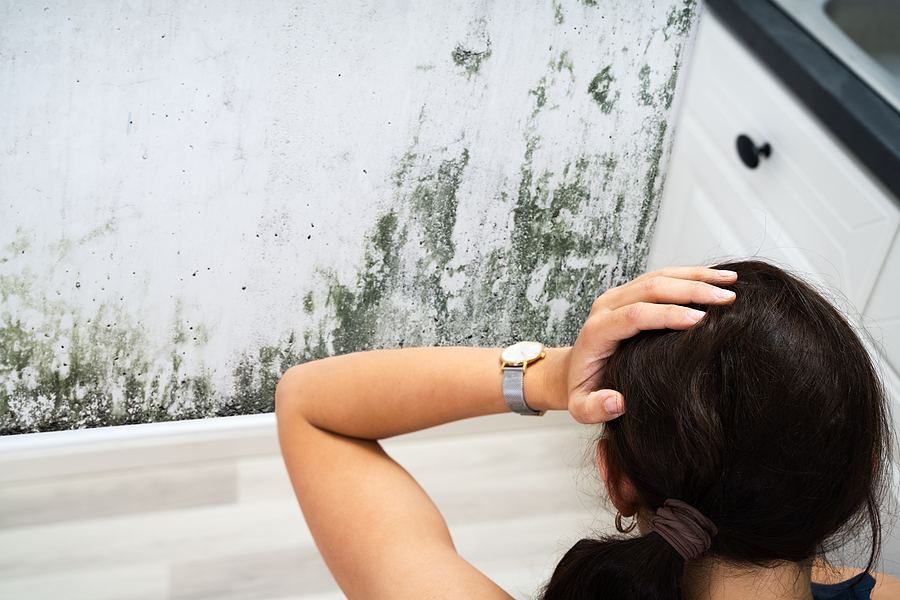Mold is everywhere. It’s all around us. But there is a difference between safe mold exposure, like Bleu cheese, and dangerous mold exposure, like aspergillus. When you start to spot mold growing in your house, it is important to address the issue as soon as possible in order to prevent upper respiratory illness and other health implications. If you have mold growing on your drywall, it is an even more pressing matter, and should be inspected right away. To preface your appointment with a mold remediation company, it helps to find out which type of mold you might be dealing with. You can usually do this by simply pinpointing its color.
Continue reading to learn what the color of the mold on your wall is and what’s likely causing it, as well as how to repair moldy walls after remediation work.

What Color of Mold Do You Have on Your Drywall?
☣ Greenish-Black – Mold that appears greenish-black in color could be Stachbotrys genus, which is also known as “black mold.” Exposure to such mold has been linked to serious health conditions. It commonly grows on high-cellulose, low-nitrogen surfaces, such as drywall, gypsum board, paper, dust and lint that is constantly exposed to moisture.
☣ Blue, Green, or White – Molds of these colors generally point to the Penicillium genus. Several years ago, this species of mold was used to make penicillin. Nowadays, it is usually found growing on food or on walls. It can cause allergic reactions, allergies, and other respiratory problems.
☣ Olive Green, Gray, Brown, or Black – Molds that appear in these color formations likely belong to the Cladosporium genus. You can find this mold growing indoors and outdoors on things like plant leaves, soil, walls, insulation, and damp carpeting. According to the CDC, they are most commonly linked to minor health complications like skin, eye, and sinus infections; but they have also been known to brain infections like fungal meningitis.
☣ Pink – Pink mold is often seen in the bathroom or kitchen, but it is not actually mold at all. It is a bacterium called Serratia marcescens. Although not a mold, it still presents hygiene and health issues, like urinary tract and respiratory infections.
☣ Green – Green mold is very vague since it can be any kind of unpleasant fungus. There are literally thousands of species of green mold, so green mold doesn’t tell you much, expect that it needs to be removed.
☣ Yellow, Green or Black – Mold that appears yellow, green, or black could possibly be Aspergillus mold. According to the CDC, we breathe these molds in almost every day without getting sick. However, concentrated exposure can be hazardous, especially for those with existing lung problems or suppressed immune systems. In individuals like these, it can cause aspergillosis, which presents itself as coughing, wheezing, and sinus inflammation.
Do you need drywall replacement after your mold remediation work is complete? Contact Drywall by Local Builders at 317-269-7319 for professional drywall services and custom drywall texture in Indianapolis, Indiana. We serve both residential and commercial clients. Request a free estimate, today!
You Might Also Like:
What You Need to Know About Wet Walls and Mold Growth
Tips for Mildew and Mold Protection After Heavy Rains
How to Remove Water Damaged Drywall

